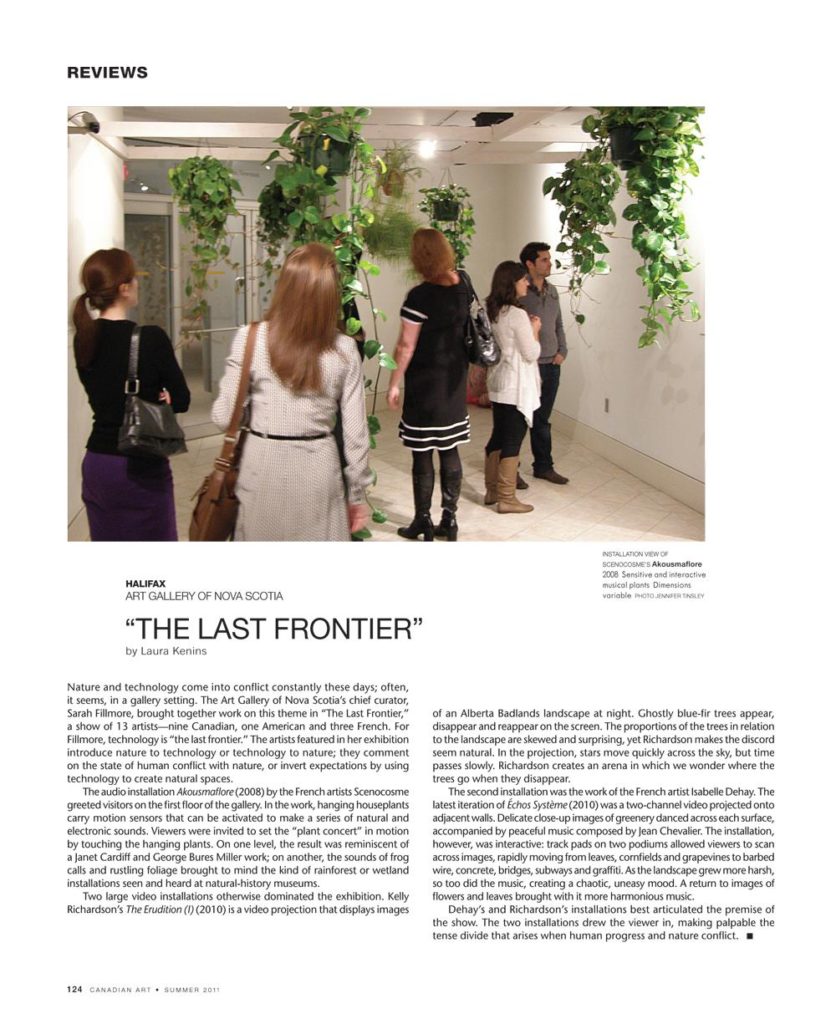Nature and technology come into conflict constantly these days; often, it seems, in a gallery setting. The Art Gallery of Nova Scotia’s chief curator, Sarah Fillmore, brought together work on this theme in “The Last Frontier,” a show of 13 artists—nine Canadian, one American and three French. For Fillmore, technology is “the last frontier.” The artists featured in her exhibition introduce nature to technology or technology to nature; they comment on the state of human conflict with nature, or invert expectations by using technology to create natural spaces.
The audio installation Akousmaflore (2008) by the French artists Scenocosme greeted visitors on the first floor of the gallery. In the work, hanging houseplants carry motion sensors that can be activated to make a series of natural and electronic sounds. Viewers were invited to set the “plant concert” in motion by touching the hanging plants. On one level, the result was reminiscent of a Janet Cardiff and George Bures Miller work; on another, the sounds of frog calls and rustling foliage brought to mind the kind of rainforest or wetland installations seen and heard at natural-history museums.
Two large video installations otherwise dominated the exhibition. Kelly Richardson’s The Erudition (I) (2010) is a video projection that displays images of an Alberta Badlands landscape at night. Ghostly blue-fir trees appear, disappear and reappear on the screen. The proportions of the trees in relation to the landscape are skewed and surprising, yet Richardson makes the discord seem natural. In the projection, stars move quickly across the sky, but time passes slowly. Richardson creates an arena in which we wonder where the trees go when they disappear.
The second installation was the work of the French artist Isabelle Dehay. The latest iteration of Échos Système (2010) was a two-channel video projected onto adjacent walls. Delicate close-up images of greenery danced across each surface, accompanied by peaceful music composed by Jean Chevalier. The installation, however, was interactive: track pads on two podiums allowed viewers to scan across images, rapidly moving from leaves, cornfields and grapevines to barbed wire, concrete, bridges, subways and graffiti. As the landscape grew more harsh, so too did the music, creating a chaotic, uneasy mood. A return to images of flowers and leaves brought with it more harmonious music.
Dehay’s and Richardson’s installations best articulated the premise of the show. The two installations drew the viewer in, making palpable the tense divide that arises when human progress and nature conflict.
This is an article from the Summer 2011 issue of Canadian Art. To read more from this issue, please visit its table of contents.









